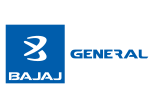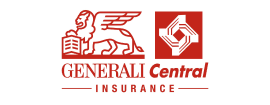What Are The Key Differences Between An Endowment And Money Back Policy?
Table of Contents
A money-back plan is different from an endowment plan in that an individual receives a fixed sum assured percentage at regular intervals. When it comes to endowment policies, at the end of the policy period, a person receives the sum promised as well as a bonus. If the policyholder dies suddenly during the policy period, the nominee gets a death benefit in the form of an amount assured and a bonus. A policy buyer is constantly looking for a plan that combines life insurance and a savings account. However, choosing the best insurance plan among the many possibilities available is a difficult task. An endowment plan and a Money Back plan are two examples of such agreements. Let's take a closer look at both of these designs, as well as the differences between them.

What's the Difference Between an Endowment and a Money-Back Plan?
While both endowment plans and Money Back policies have the same aim as whole life insurance, they have significant variances. As a result, to assist you in making an informed selection, below are some significant distinctions between endowment and Money Back plans.
1. Advantages of Maturity and Time
If the insured individual outlives the insurance term under an endowment plan, the guaranteed sum and corresponding awards are handed to them at maturity. There are no provisions for payments under the endowment plan. In contrast, a Money Back insurance pays out a part of the sum insured at preset intervals throughout the policy period. In addition, if the policyholder lives longer than the policy term, the covered person will receive the balance of the sum assured at maturity.
2. Advantages of Death
The endowment insurance and the Money Back plan will pay the guaranteed amount plus applicable incentives if the covered individual departs during the policy's term. In a Money Back plan, however, regardless of the premium instalments paid, the whole sum assured is paid to the insured person's dependents in the case of the policyholder's death. This is the feature that separates an endowment from a Money Back plan, and it's also why a Money Back plan costs a little more.
3. Suitability
An endowment plan is a way for people to save money for all of their long-term financial objectives, such as buying a house, paying for their children's higher education, or retiring. Money Back insurance, on the other hand, is suitable for those who need a steady source of income to achieve all of their short-term financial goals, such as paying EMIs, house expenses, and children's school tuition.
4. Risk
The risk associated with endowment schemes is quite low when compared to a Money Back policy. Furthermore, the survival and mortality benefits of an endowment plan are higher, and the premium payment is lesser.
Conclusion
You should be able to see that both endowment plans and Money Back policies have their own set of perks and drawbacks after looking through all of the pros and disadvantages of money-back vs. endowment plans. Some modern investors, on the other hand, feel that an endowment strategy is somewhat better than a Money-Back scheme. We hope that the information provided above will help you choose between a money-back and an endowment plan. As a consequence, you have the flexibility to select a life insurance plan that suits your unique requirements and budget.
Also Read: What Is The Difference Between Money Back Plans And ULIPs?
Disclaimer: This article is issued in the general public interest and meant for general information purposes only. Readers are advised not to rely on the contents of the article as conclusive in nature and should research further or consult an expert in this regard.



























































